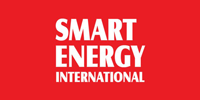
What exactly are nanogrids? Think of a microgrid, but:
- Smaller, which means quicker and easier to deploy and more affordable
- Localized, so customer centric and able to be tied to other nanogrids, microgrids and the utility macrogrid
- Able to be aggregated, which can create a coordinated response to support other grids in times of emergencies
Both nanogrids and microgrids are forms of local energy—self-sufficient systems with power generation, controls and often energy storage—that serve customers within a discrete footprint. Although they can operate on their own, most North American microgrids and nanogrids are also connected to the central grid. They are able to island from the larger grid and operate independently during power outages. Electricity continues to flow to homes and buildings served by microgrids and nanogrids even as others around them are in the dark. This is a prime reason for their installation, one that is especially important given that the U.S. is experiencing more outages caused by storms, wildfires and other dangerous conditions that affect the safety of communities. Meanwhile, power outages to homes, a prime market for nanogrids, are no longer a mere inconvenience; they can carry significant costs now that more people are working from home. Indeed, COVID-19 created situations where high ranking corporate officials were operating from their houses, shifting the corporations’ de facto headquarters to residences that lack the kind of backup energy systems more likely to be found at their office complexes.
But it’s not only electric reliability that makes these systems attractive. Because they are tied to the electric grid, they may supply services to it and be paid for doing so. For example, a utility might pay to tap into a nanogrid’s battery at a time when demand is high on the electric grid and it needs more energy, such as a hot day when air conditioning use is high.
Nanogrid and microgrid owners also can save money if they use energy from their systems, instead of the grid, during times when grid power is expensive.
Another important benefit of nanogrids is their interconnectivity to a larger scale smart grid. An aggregated network of nanogrids can be very valuable to the grid. Currently, solar is generating power at times of the day when energy is at lowest demand. Besides simply turning off the solar panel production, through a practice called curtailment, the utilities do not have an effective way of managing all the separate points of intermittent connection. They don’t have a way to store the solar power effectively. In addition, at times when the utilities need the power most, current independent solar systems cannot necessarily supply it because they lack the intelligent technology to do so. This is partially due to the fact that the solar energy is not being produced at those critical times of the day. Nanogrids can help solve this problem.
read more





